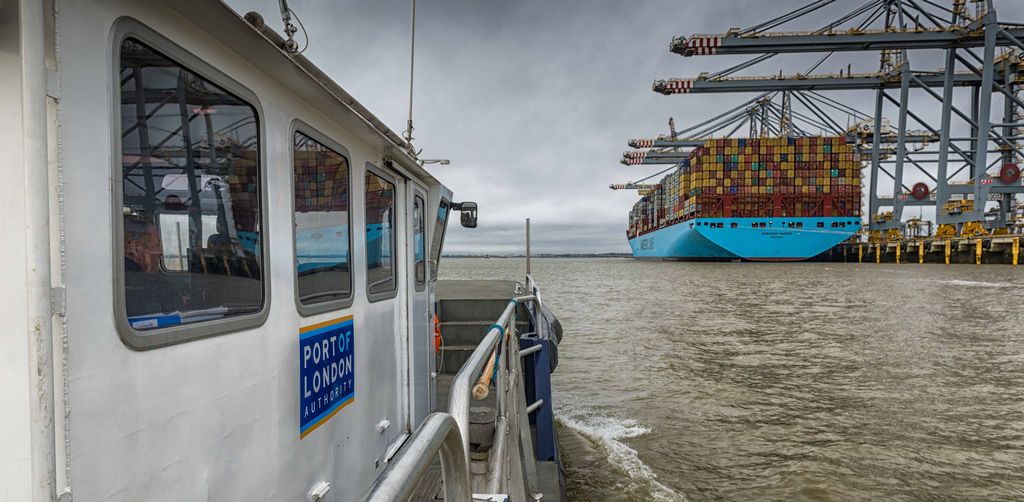08.03.2019
Port of London trade at 10-year high
Trade through the Port of London reached 53.2 million tonnes last year, a level last seen more than a decade ago, following strong growth in containerised cargoes, particularly at the newest container terminal on the river, DP World London Gateway, which attracted a number of new services.
 Port bosses say that long-term growth in the port will be secured through further development at Gateway and investment in major new projects – Forth Ports last month gained development consent for its new £200 million port terminal, Tilbury2. P&O Ferries is the principal customer for the new ro-ro facility, while the remaining site will be dedicated to the country's largest construction processing hub.
Port bosses say that long-term growth in the port will be secured through further development at Gateway and investment in major new projects – Forth Ports last month gained development consent for its new £200 million port terminal, Tilbury2. P&O Ferries is the principal customer for the new ro-ro facility, while the remaining site will be dedicated to the country's largest construction processing hub.
“Trade last year was up almost 10 per cent last year,” said PLA chief executive, Robin Mortimer. “This is testament to the continued substantial investment underway at terminals along the river.
“Traditionally terminals on the Thames have been the route for supplying the country’s major centre of population with life’s essentials: food, fuel and much more. This has never been truer than today and is at the heart of growth forecasts trade in the Thames Vision, which see forecast cargoes on the river rising to as much as 80 million tonnes by 2035.”
Container trades led the growth last year, up by 3.4 million tonnes, topping 20 million tonnes for the first time. This reflected increased throughput at DP World London Gateway, with volume up 35 per cent, which was in part down to the port winning scheduled services from Asia and the Mediterranean. Unitised cargo throughputs also increased at the Port of Tilbury and Cobelfret.
Oil products and gases rose by 500,000 tonnes to 14.1 million tonnes as new and upgraded facilities came on stream, including at OIKOS on Canvey Island. OIKOS’s £65 million investment in the third phase of a major construction and development programme at its bulk liquid storage terminal on Canvey Island includes the construction of an additional 12 storage tanks, a new jetty and new road loading racks.
Redevelopment of roll-on/roll-off freight operator, Cobelfret’s, jetties at Purfleet was completed during the year, as part of the investment which has seen larger vessels deployed on their routes to the Netherlands and Belgium.
Investment by building materials operators included Hanson completing the first phase of a £4.3 million upgrade at its Dagenham aggregates depot and wharf. Works are also underway at CEMEX Northfleet, where the discharge system is being replaced in a PLA Investment Plan funded initiative. The Brett Group is developing a new concrete batching plant at Peruvian Wharf, a safeguarded wharf in London purchased by the PLA in 2016, which will be reactivated this year.
Robin Mortimer concluded: “Terminals on the Thames are flexible and able to respond to changing patterns of trade. Last year’s trade figures show that the fundamentals of the Thames are strong and attracting a growing amount of business. The investment we are continuing to see means the port is well placed to meet the challenges of the future, whatever form they take.”
– ends –
Contact: Martin Garside (01474 562366). Email: [email protected]
Notes to editors:
- The Port of London comprises over 70 independently owned and operated terminals and port facilities at different locations on the Thames. These handle a wide range of cargoes.
- The Port of London Authority (PLA) is responsible for navigational, safety and related matters on 95 miles of the tidal Thames from the sea to Teddington in west London. The PLA provides navigational, port control / Vessel Traffic Services, safety, pilot, diving and other services for users of the Thames.

